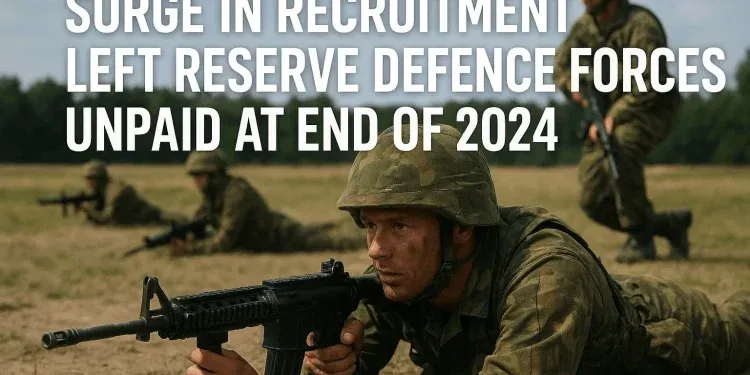DUBLIN – The Government ran out of money to pay members of the Reserve Defence Forces (RDF) in late 2024 after a surge in recruitment far exceeded budget forecasts, according to newly released Department of Defence documents.
While the Permanent Defence Forces’ strength has remained stagnant, the RDF — comprising the Army Reserve and the much smaller Naval Service Reserve — has seen sharp growth over the past two years. This trend, fuelled by the removal of recruitment barriers and planned advertising drives, is expected to continue in 2025.
Budget Shortfall Discovered in November
Internal records show that in November 2024, officials realised the €3.01 million budget for “reserve training and support days” had already been exhausted, despite additional funds being allocated earlier in the year. Without further emergency funding, RDF activities would have to be halted, or reservists would face going unpaid over the Christmas period.
Ultimately, members did not receive payment until the start of 2025.
The shortfall was attributed to a recruitment “surge” during 2024, following the removal of delays in medical assessments for new recruits. The numbers have continued to rise this year, supported by the Government’s revitalisation plan for the Reserve.
Membership Growth Outpaces Forecasts
In mid-2023, the RDF had just over 1,400 members — about one-third of its notional full strength. By early 2025, the number had risen to just under 2,000, bringing it to half capacity.
Figures provided by the Defence Forces show:
- 2023: Recruitment was relatively low.
- 2024: 268 new recruits joined — a 300% increase on the previous year.
- 2025 so far: 76 inducted, with 227 more in training.
A Defence Forces spokesman confirmed that induction numbers are expected to grow further once a nationwide recruitment campaign launches in the coming months.
Budget for 2025 Still in Question
The budget for the RDF has been increased to €3.4 million for 2025, but officials have warned that funding requirements will remain unpredictable due to fluctuating recruitment and the scope of revitalisation plans.
In late 2024, the Reserve Defence Force Representative Association told Tánaiste and Minister for Defence Simon Harris that the 2025 budget covers only seven days of military service per reservist — far short of the 80 days some members serve annually.
Government’s Revitalisation Plan
Under the Government’s plan, announced last year, measures include:
- Doubling the size of the Naval Service Reserve from 200 to 400 personnel.
- Creating a 200-strong Air Corps Reserve.
- Introducing legislation to allow reservists to serve overseas.
- Examining job-protection measures for members called up for duty.
The plan also seeks to attract more recruits by addressing delays in medical processing and increasing public awareness. However, military sources say bottlenecks remain, including a shortage of doctors qualified to conduct entry medicals.
Concerns Over Employment Status and Workload
Some reservists have voiced frustration that they are being used as a “shadow workforce” by the Permanent Defence Forces to fill staffing gaps without receiving equivalent employment rights, such as PRSI contributions.
Many work on a near full-time basis alongside permanent personnel but are still classified as “volunteers.” Later this year, the Workplace Relations Commission will hear a case brought by one reservist challenging this classification.
Official Response
A Department of Defence spokesman said Minister Harris is committed to regenerating the RDF and confirmed that the Office of Reserve Affairs is “fully resourced and equipped” to boost numbers.
While recruitment momentum remains strong, the challenge for the Government will be ensuring that budget allocations keep pace — avoiding a repeat of the 2024 shortfall and ensuring the RDF can expand without compromising member welfare.







